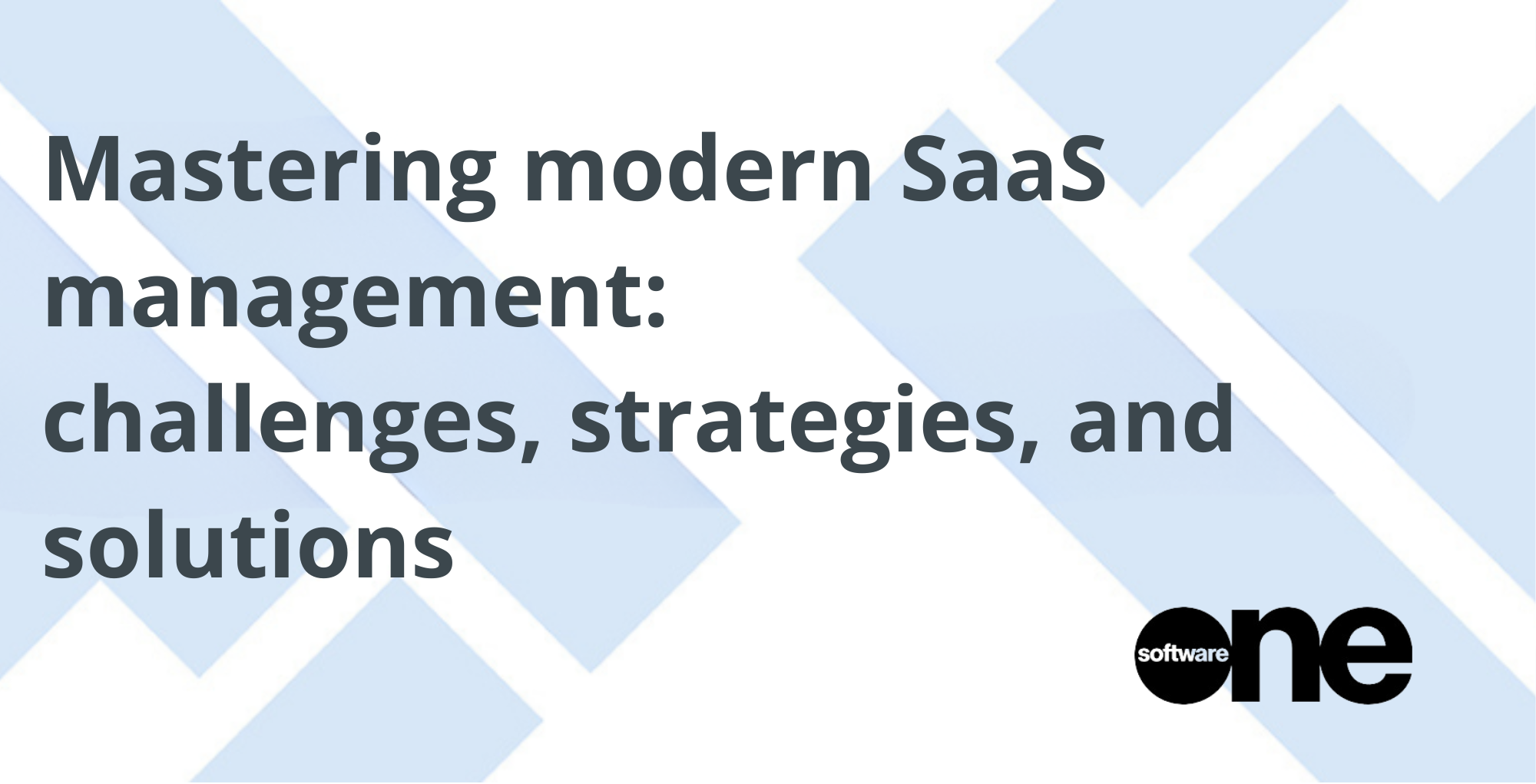Author: Julien Kuijper
Global Product Manager, SoftwareOne (an ITAM Forum Patron)
This blog first appeared here on the SoftwareOne website.
Organisations face a multitude of challenges when it comes to managing their ever-expanding SaaS estate. These challenges can be categorised into two groups: those related to compliance and those associated with efficiency. To effectively address these challenges, organisations need a robust governance model that encompasses both.
Here, we answer some of the most frequently asked questions we receive about overcoming these challenges.
What are the hidden dangers of ungoverned SaaS?
Organisations must understand the true extent of their ungoverned SaaS applications and the associated risks. Surprisingly, a significant portion (estimated 60%) of SaaS products often go unnoticed by central IT governance. In addition, around 10% of SaaS products aren’t used or have been forgotten by the departments that originally purchased them.
This lack of visibility leads to a range of issues (security breaches, compliance violations, cost inefficiencies, etc.). Without a comprehensive view of their SaaS footprint, CFOs and CIOs find it challenging to accurately manage and report on digital costs. This lack of control can hinder efforts to demonstrate a meaningful ROI for technology expenditures and track progress in digital transformation.
How can we strike the right balance between SaaS adoption and governance?
Business units are increasingly approached directly by SaaS vendors, and if a solution makes sense, they have the capacity to make informed decisions about its adoption. However, they may not be fully aware of the SaaS risks, including security, legal terms and conditions, renewal processes, and potential redundancies in the software stack.
The critical factor in achieving the right balance is the implementation of a well-defined governance model. A robust governance model must include a clear SaaS catalogue and a non-negotiable security and terms-and-conditions approval process.
What are some recommendations for tailoring SaaS management strategies?
Given the diversity in SaaS models, adopting a “one size fits all” governance framework is highly ineffective. Organisations must tailor their SaaS management strategies to accommodate the various types of SaaS products in their portfolio.
Tier-1: Enterprise-wide solutions
Tier-1 SaaS products are used across the organisation and often come with high costs and complex licensing and compliance requirements – they represent 2 to 5% of purchasing transactions and 80% of overall SaaS cost. These solutions, such as Salesforce, Microsoft, and ServiceNow, typically fall under the scope of IT and require expert management.
Tail-End: Low-cost solutions with a small number of users
While Tail-End SaaS products constitute the majority – on average 80% of purchasing transactions – they usually account for less than 30% of overall SaaS costs. Business units are often responsible for managing these solutions, but they still require security and legal oversight along with adherence to official purchasing processes.
Tier-2: Intermediate solutions
Tier-2 SaaS products fall between these two categories. Multiple business units uses these categories and are gaining significance in terms of users and costs. Managing Tier-2 solutions needs collaboration between IT and business units.
To effectively manage this diverse SaaS landscape, organisations should employ experts for Tier-1 and Tier-2 solutions, focusing on cost governance, licensing compliance, and usage optimisation. Meanwhile, Tail-End SaaS products benefit from improved governance, cataloguing, security, legal approval processes, and purchasing efficiency. Also, business owner identification, redundancy elimination, proper renewal management and purchasing/transaction efficiency.
How does modern portfolio management transform ITAM and SAM practices?
Managing a modern portfolio that encompasses classic software, SaaS, and enterprise solutions complements traditional Software Asset Management (SAM) and IT Asset Management (ITAM) practices.
The shift to the cloud and the emergence of FinOps have introduced a new paradigm. FinOps emphasizes accountability and broader stakeholder engagement. Unlike traditional on-premises software, SaaS often doesn’t require IT technical support, can be purchased via various channels, and is financed differently, through operational expenses.
To effectively manage this hybrid landscape, organisations should implement a 360° Smart Portfolio Management initiative to cover legacy management, new technology adoption, and application modernisation strategies, applying the “Transformation 7Rs” framework (Rehost, Relocate, Replatform, Refactor, Repurchase, Retire, and Retain) to the overall application portfolio.
What challenges and strategies should organisations consider when rethinking SaaS estate management as they plan for the future?
- Non-negotiable compliance
Compliance, especially regarding security, legal, and regulatory policies, should not be up for debate. Every SaaS product must undergo the necessary approval processes. The key is to make these processes quick and efficient, ensuring no bypass from business units. - Financial control
SaaS is a critical component of an organisation’s digital investment, and CIOs, CFOs, and CEOs must have clear and predictable visibility into all digital costs and their ROI. What was once called Shadow IT should be viewed as “Business-chosen digital adoption.” - Realistic governance
Balancing control and freedom is the secret to garnering adherence to governance practices. A pragmatic approach that accommodates the specific needs of business units for different SaaS products is vital. - Budgeting for SaaS management initiative and operation
Managing the overall software and SaaS portfolio governance incurs costs and needs thorough change management. This is an integral part of achieving a positive ROI on digital adoption, and C-level executives should allocate resources and competencies accordingly.
SaaS applications are pivotal enablers of modern business success. While business units need agility and the freedom to adopt SaaS solutions rapidly, organisations must strike a balance by enforcing non-negotiable compliance, maintaining financial control, implementing realistic governance, and allocating the necessary resources to budgeting. These ingredients are crucial for successful SaaS estate management.

